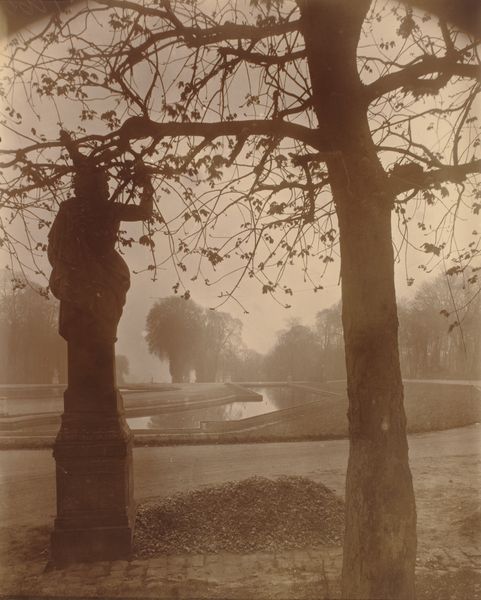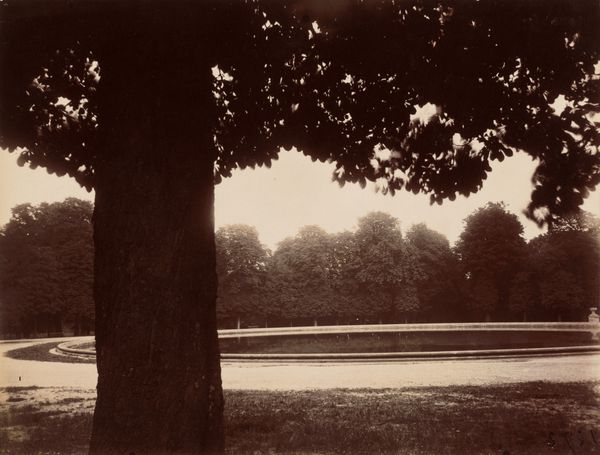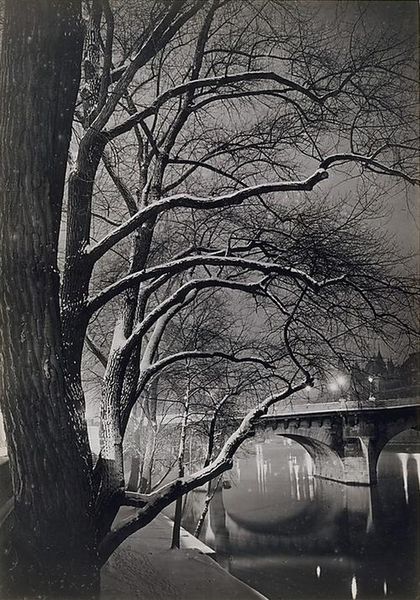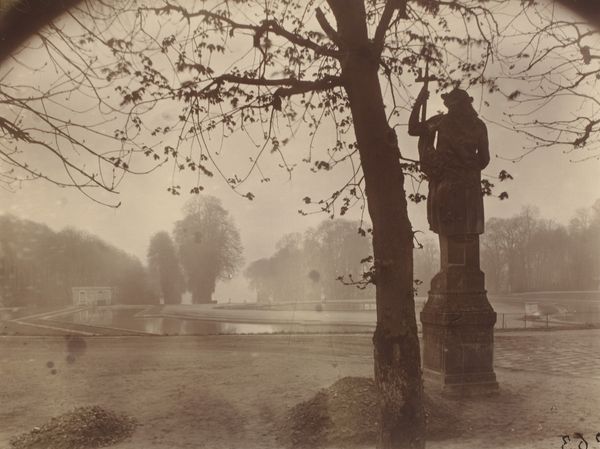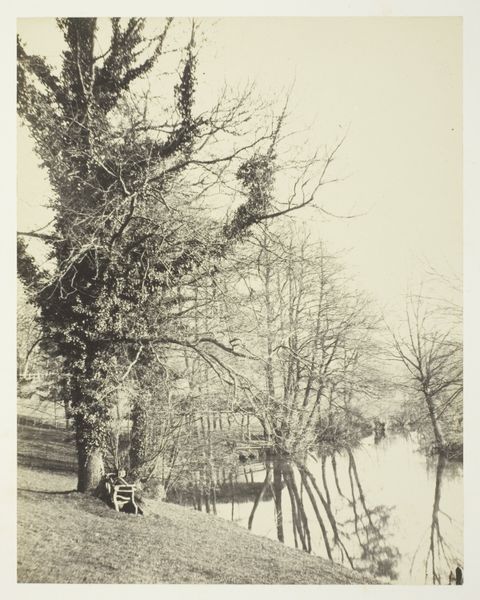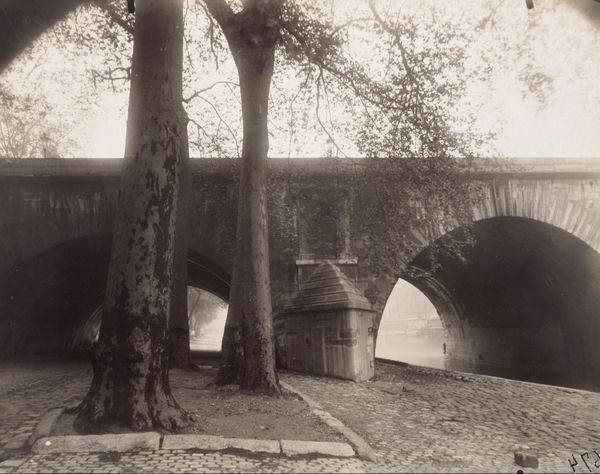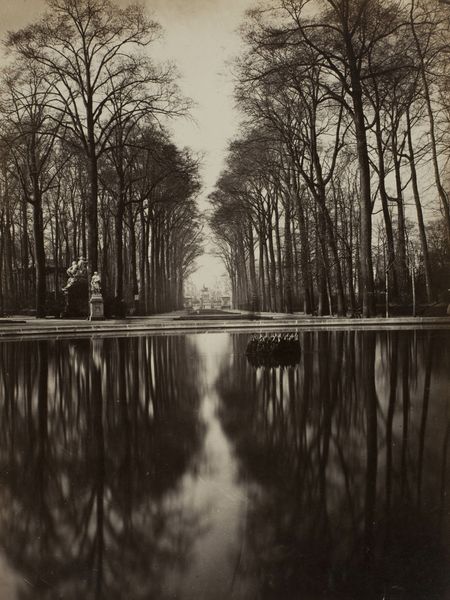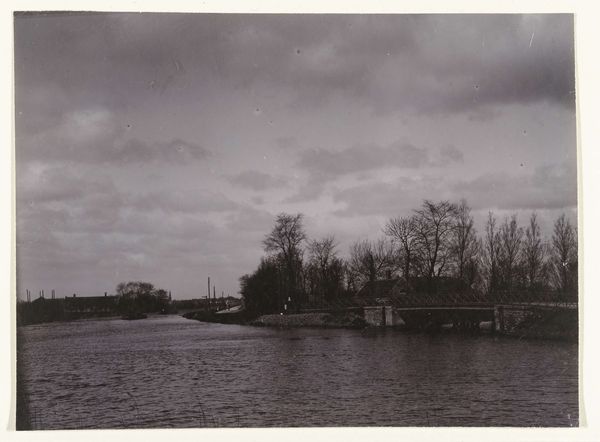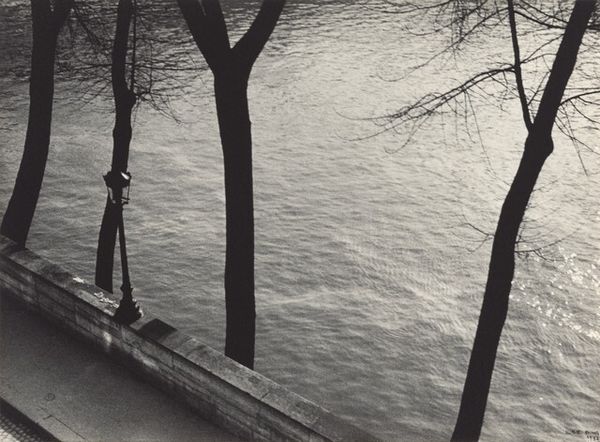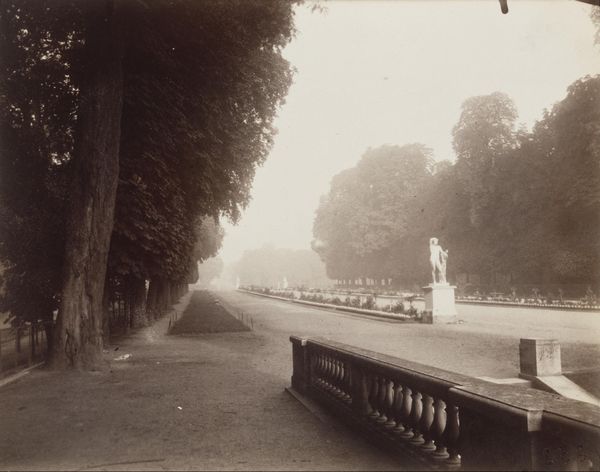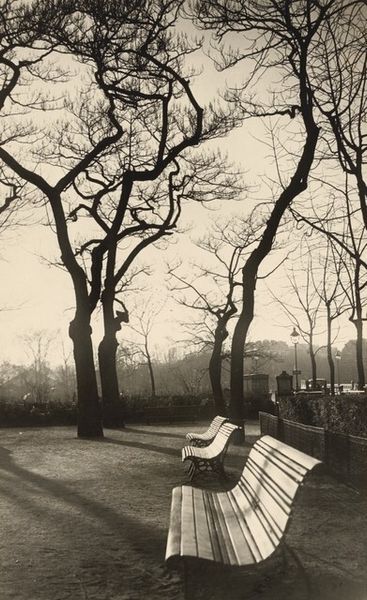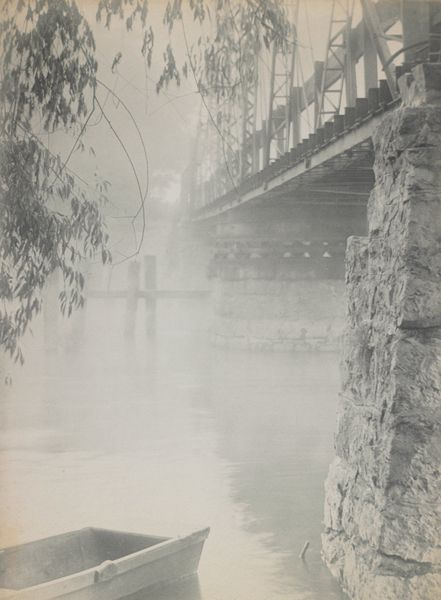
photography
#
black and white photography
#
photography
#
monochrome photography
#
fog
#
statue
Dimensions: sheet: 22.6 x 17.9 cm (8 7/8 x 7 1/16 in.) overall: 45.7 x 35.6 cm (18 x 14 in.)
Copyright: National Gallery of Art: CC0 1.0
Editor: This photograph, titled *Notre-Dame*, was taken in 1922 by Eugène Atget. It’s a misty view of the cathedral from across the Seine. I’m immediately drawn to the textures, particularly the way the bare tree branches contrast with the stone of the building. What captures your attention in this image? Curator: For me, it's how Atget uses the photographic process itself to make a statement about labor and value. This isn't some romantic, painterly image. It’s a straightforward, almost documentary, view made possible by specific materials – the lens, the glass plate negative, the printing paper. Editor: Could you expand on that a little? I mean, I see it’s a photograph, but I'm not sure what's particularly revealing in how he created this work? Curator: Look closely. The choice of a large format camera and contact printing would have required a specific kind of labor: lugging equipment, carefully composing the shot, and long exposure times. By recording these details, the cracks in the paving stones or the texture of the cathedral’s facade, Atget captures a specific material reality and also acknowledges all the workers who build these features and made it. It subtly challenges what society deems valuable by also emphasizing the often overlooked built environment, along with that photographic labour. Editor: So, rather than just a beautiful view of Notre-Dame, it's a kind of comment on the social forces that built the city, and how it is recorded? Curator: Precisely! And further, by using photography – a relatively new, mass-reproducible medium at the time – to document this historically significant building, Atget democratizes access to it. Editor: I never thought about it that way. It makes you reconsider what constitutes "high art" and the role of materials and production in our understanding of art. Thanks! Curator: It’s about recognizing the social lives of things, I have also learned from your insightful questioning about the mood in this evocative picture.
Comments
No comments
Be the first to comment and join the conversation on the ultimate creative platform.
